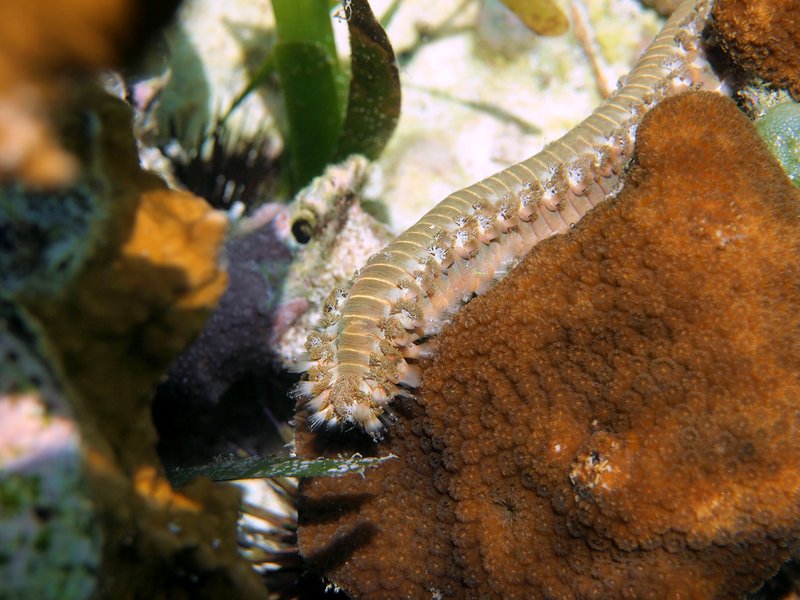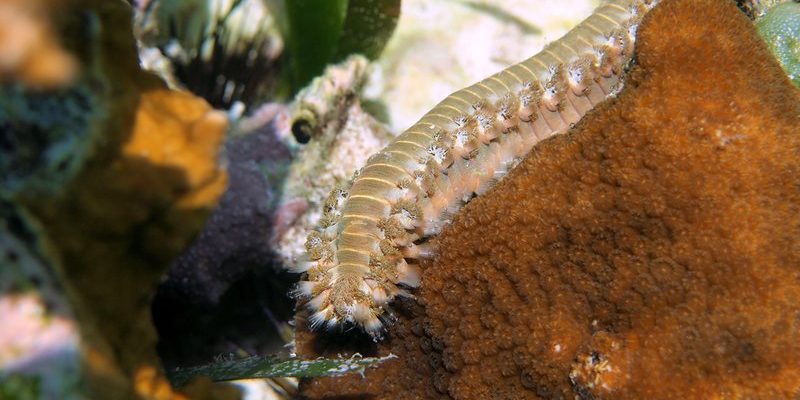
Imagine you’re at a vibrant party, full of energy and excitement. You’re chatting with friends when suddenly, someone you thought was just hanging out starts causing a ruckus. That’s a bit like what can happen in your aquarium, where bristle worms are sometimes seen as party crashers. In fact, many people worry that these worms might take a bite out of their healthy fish. So, let me explain what’s really going on with bristle worms and their relationship with our finned friends.
What Are Bristle Worms?
Bristle worms are part of a larger group called polychaetes, which are segmented worms found in marine environments. They have long, slender bodies covered in tiny bristles, or setae, which they use for movement and to capture food. Think of them as the janitors of the ocean floor, helping to break down organic matter and clean up the habitat. They play a crucial role in keeping the ecosystem balanced, much like how a good cleaning crew keeps your home tidy.
Most bristle worms are harmless and can actually be beneficial for your tank. They help aerate the substrate and consume waste, which can help maintain water quality. But here’s where the concern comes in: some people fear that these worms might turn predatory on healthy fish, especially when food sources are scarce.
Do Bristle Worms Attack Healthy Fish?
The short answer is: it depends. Generally speaking, **bristle worms do not attack healthy fish**. They’re typically more interested in detritus, leftover food, and decaying matter. However, there can be exceptions. For instance, if a fish is already stressed, injured, or sick, it may attract unwanted attention from these curious creatures. It’s a bit like a group of friends who rush to help when there’s a commotion; if they sense something is off, they might get involved, even if it’s unintentional.
There’s also the size factor to consider. Some species of bristle worms can grow quite large—up to a foot or more in length! These larger worms may be more likely to show aggressive behavior, especially if they feel threatened themselves. But let’s be clear: healthy, active fish usually don’t have too much to worry about.
Why Do People Worry About Bristle Worms?
The fear surrounding bristle worms often stems from misunderstanding. Many aquarium owners have seen their fish behaving oddly, which can lead to the assumption that bristle worms are to blame. It’s a classic case of jumping to conclusions without full evidence.
Here are a few reasons people might be concerned:
- Appearance: Bristle worms look like slimy, wiggly creatures, which can make them appear more menacing than they really are.
- Behavior: They can be somewhat aggressive in their feeding habits, especially in a crowded tank where food is limited.
- Miscommunication: A lack of information can lead to unjustified fears. Many hobbyists spread tales about bristle worms attacking fish, but these stories often lack context.
If you notice any odd behaviors in your fish, it’s important to consider other factors too—like water quality, tank mates, and overall stress levels.
Identifying Harmful Species of Bristle Worms
While most bristle worms are harmless, there are a few species that can be more problematic. Identifying them is key to managing their presence in your aquarium.
**Here’s how you can tell if a bristle worm might be harmful:**
- Color: Some harmful worms are brightly colored or have unique patterns.
- Size: Larger species may be more aggressive and are worth monitoring closely.
- Behavior: If a worm is consistently attacking or bothering your fish, that’s a sign to take action.
If you suspect that you have a problematic bristle worm species, consider consulting with an aquarium professional. They can help identify the worm and suggest possible solutions.
Keeping Your Tank Healthy to Prevent Issues
A well-maintained aquarium is your best defense against any potential problems, including with bristle worms. Here are some steps you can take to ensure your tank stays healthy:
- Regular Water Changes: Keep the water clean and well-filtered to reduce waste buildup.
- Balanced Feeding: Provide the right amount of food to avoid leftovers that could attract bristle worms.
- Monitor Fish Health: Keep an eye on your fish for signs of stress or illness, as these can make them more vulnerable.
By taking these proactive steps, you create a thriving environment where both fish and bristle worms can coexist peacefully.
What to Do If You See Fish Injured by Bristle Worms
In the rare event that you find your fish are getting injured, it’s important to act quickly. Here are a few steps you can take:
- Assess the Damage: Check the fish for any cuts or wounds. If it’s minor, it may just need some time to heal.
- Isolate Affected Fish: If a fish is severely injured, consider placing it in a hospital tank to reduce stress.
- Consult a Vet: If you’re unsure, a vet or aquarium professional can provide valuable insight and treatment options.
Remember, keeping your fish healthy and happy is your best defense against any kind of attack in the aquarium.
So, do bristle worms ever attack healthy fish? The answer mainly rests on understanding the ecosystem of your aquarium. Generally, they’re more of a harmless addition than a threat, working behind the scenes to keep everything clean.
However, if you observe your fish acting strangely or if injuries occur, it’s essential to assess the situation carefully. With a little knowledge and observation, you can ensure that your aquarium stays a safe and happy home for all its inhabitants. By focusing on maintaining a healthy environment, you can enjoy the wonders of your aquatic world without unnecessary worry about bristle worms. After all, every party needs its cleanup crew!

